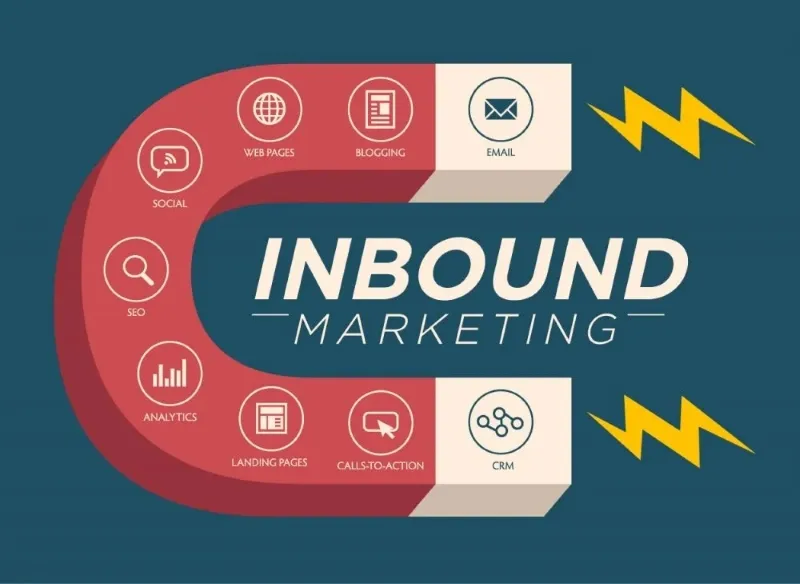Defining Inbound and Outbound Marketing
Marketers should first know what these two concept means.

What is inbound vs outbound marketing
What is Inbound Marketing?
Inbound marketing, on the other hand, is a newer approach that focuses on attracting potential customers to your business organically. This can include tactics such as content marketing, search engine optimization (SEO), social media marketing (e.g. Instagram paid ads, advertise on Facebook, etc.), and email marketing strategy.
When conducting an inbounding marketing strategy, marketers may want to know about ad conversion rate to maximize the effectiveness of the inbound marketing campaign, or how to advertise on Youtube as this Social media video platform have tremendous users.
The main goal of inbound marketing is to create valuable content that potential customers will find useful or interesting, and then use that content to attract them to your website or social media profiles. Once they are there, you can engage with them and nurture them into becoming customers.
Inbound marketing is often seen as a more ethical and effective approach, as it focuses on providing value to potential customers rather than interrupting them with unwanted messages. It also allows you to build a relationship with potential customers before they even become customers, which can lead to more loyal and engaged customers over time.

What is inbound marketing
What is Outbound Marketing?
Outbound marketing is a traditional approach to marketing that involves reaching out to potential customers directly. This can include methods such as cold calling, email marketing, direct mail, and even TV and radio advertising.
The main goal of outbound marketing is to get your message in front of as many people as possible in the hopes that some of them will become customers. This approach is often seen as more aggressive and interruptive, as it involves pushing your message onto potential customers.
While outbound marketing can be effective in some cases, it can also be expensive and inefficient. For example, if you are sending direct mail to people who are not interested in your product or service, you are wasting your time and money.

What is outbound marketing
Inbound vs outbound marketing: Key Differences
Now that we understand the basics of inbound and outbound marketing, let's take a closer look at some of the key differences between the two approaches:
| Inbound | Outbound | |
| Approach | Inbound marketing is a pull strategy, where you attract potential customers to your business. | Outbound marketing is a push strategy where you push your message onto potential customers. |
| Cost | Inbound marketing activities can be done in-house and don't require a significant budget. This can be said a more cost-effective method. | Outbound marketing can be expensive, as it often involves paying for advertising space, direct mail materials, and telemarketing software. |
| Effectiveness | Inbound marketing focuses on building relationships with potential customers, which can lead to more loyal and engaged customers over time. | Outbound marketing can be effective in certain situations, such as when targeting specific demographics or industries. However, outbound marketing can be less effective when the message is not well-targeted or when potential customers are not interested in your product or service. |
| Timing | Inbound marketing is a long-term strategy that focuses on building relationships with potential customers over time. | Outbound marketing is often seen as a short-term strategy, as it aims to get immediate results. |
| Relationship Building | Inbound marketing focuses on building relationships and providing value to potential customers, which can lead to more loyal and engaged customers over time. | Outbound marketing is often seen as transactional, as it is focused on getting potential customers to take a specific action (e.g. buy a product or service). |
Table: Comparison between Inbound Marketing and Outbound Marketing
When to Use Inbound Marketing vs Outbound Marketing
Inbound and outbound marketing are not mutually exclusive, and both strategies can be used together to achieve your marketing goals. However, depending on your business, one strategy may be more effective than the other. Here are some examples:

Which one is more suitable, inbound or outbound?
Use inbound marketing if businesses:
- Want to build brand awareness and establish your business as a thought leader in your industry: By creating valuable content, optimizing your website for search engines, and engaging with your audience on social media, you can attract potential customers to your business organically.
- Have a smaller marketing budget and want to maximize your return on investment: Inbound marketing relies on creating valuable content, which can be done in-house, and optimizing your website and social media profiles for search engines. By doing so, you can attract potential customers to your business without having to spend a lot of money on advertising.
- Is in a niche industry with a specific target audience: By creating content that is relevant to your target audience, you can attract potential customers who are interested in your products or services.
Use outbound marketing if businesses:
- Have a specific product or service that you want to promote to a specific demographic: Outbound marketing allows you to target potential customers directly through methods like email marketing, direct mail, and telemarketing.
- Want to reach a larger audience quickly: Outbound marketing allows you to reach a large number of potential customers through methods like advertising on TV and radio. While outbound marketing can be expensive, it can be an effective way to reach a large audience in a short amount of time.
- Is in a highly competitive industry where you need to stand out from your competitors: Outbound marketing allows you to promote your business and differentiate yourself from your competitors through methods like advertising and direct mail.
Inbound vs outbound marketing, which is more suitable? They are two fundamentally different approaches to marketing, each with its own strengths and weaknesses. Hopefully, the article by Vietnam Manpower helps you understand the key differences between the two to choose the approach that is best for your business and marketing goals.












Replies to This Discussion